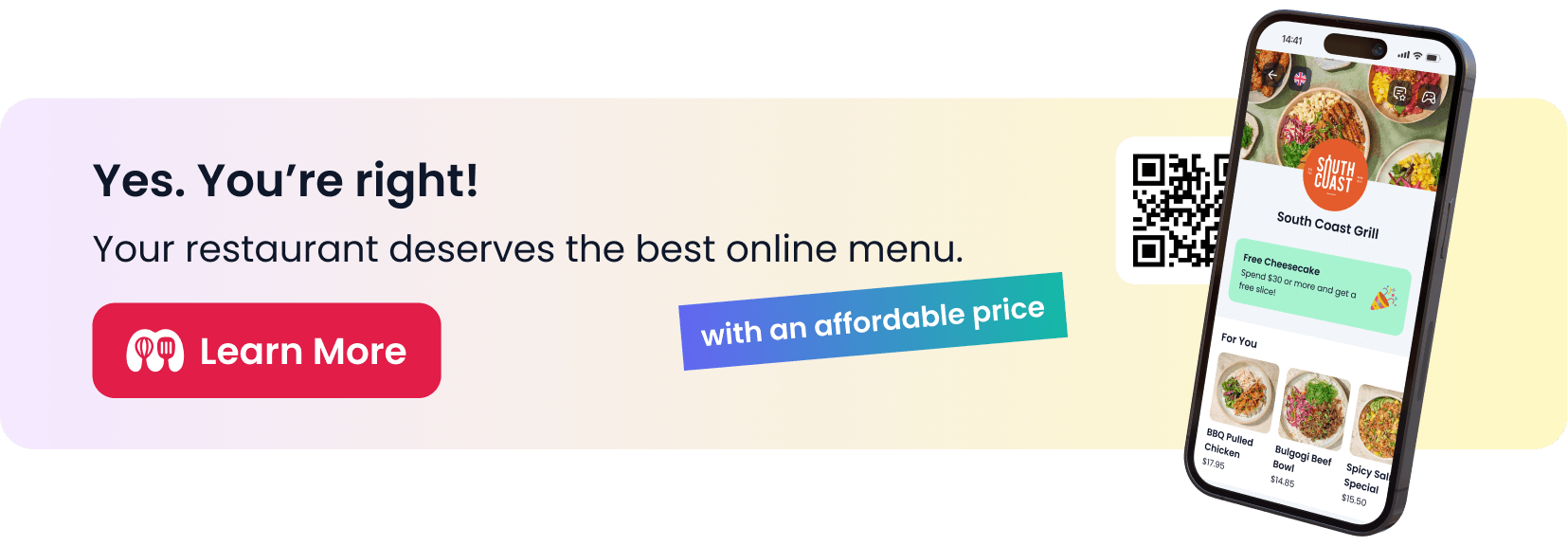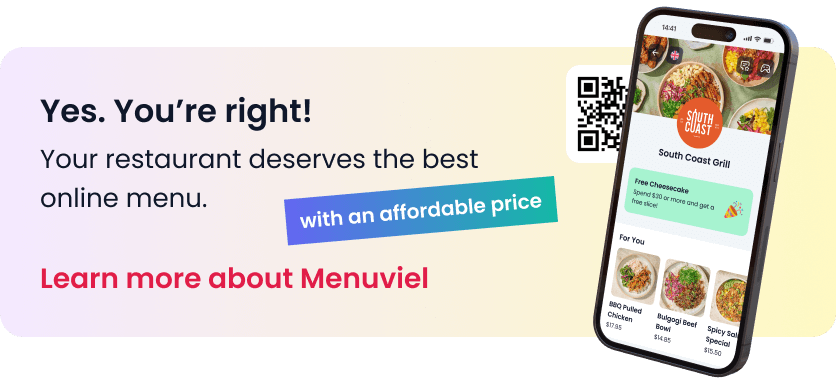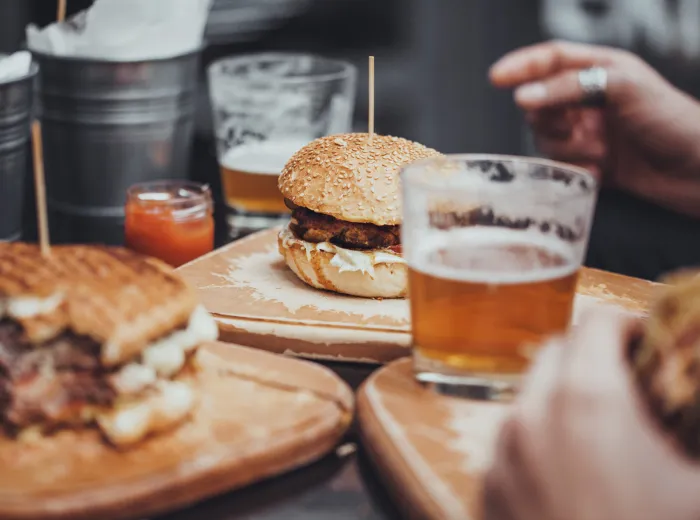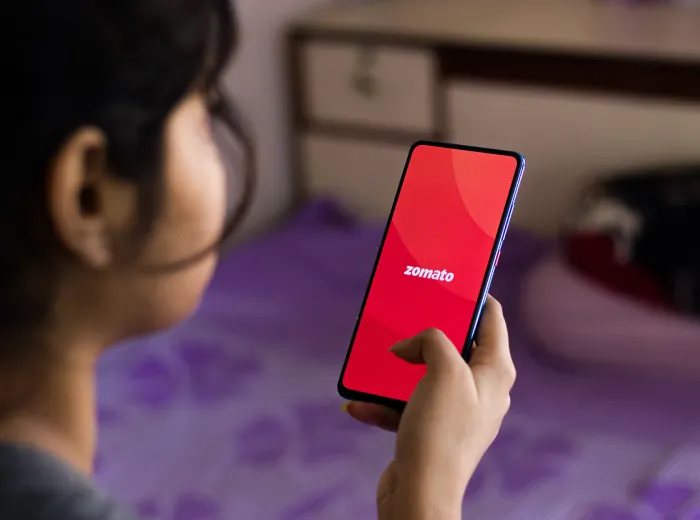The Different Types of Loyalty Programs for Restaurants
Loyalty programs have become a cornerstone for restaurants looking to build long-term relationships with their customers. In today’s highly competitive hospitality industry, offering great food and service is no longer enough to guarantee customer retention. Restaurants need to go the extra mile, and that’s where loyalty programs come into play. These programs not only reward repeat customers but also create a sense of belonging, turning one-time diners into regular patrons.
With more consumers seeking personalized dining experiences and exclusive deals, a well-implemented loyalty program can make your restaurant stand out. Whether you’re running a casual café or a fine dining establishment, the right loyalty program can drive repeat business, boost customer spending, and even attract new diners through word of mouth. But not all loyalty programs are created equal, and choosing the right one for your restaurant can be the key to success.
In this article, we’ll dive deep into the different types of loyalty programs available for restaurants, exploring their benefits, challenges, and best practices. By the end, you’ll have a clearer understanding of which program aligns with your restaurant’s goals and how to maximize its potential.
Would you like to listen our deep-dive conversation about this article?
What Are Restaurant Loyalty Programs?
Loyalty programs are structured marketing strategies designed to encourage customers to continue dining at a restaurant by offering rewards or incentives. For restaurants, these programs serve as a tool to enhance customer retention, increase the frequency of visits, and boost overall sales. By providing rewards for repeat business, loyalty programs foster long-term relationships with customers, making them feel valued and appreciated.
In the restaurant industry, where competition is fierce and customer expectations are constantly evolving, loyalty programs can help differentiate your brand. These programs not only increase customer satisfaction but also allow restaurants to gather valuable data, enabling more personalized service. Let’s explore the different aspects of restaurant loyalty programs in more detail.
Definition of Loyalty Programs
A loyalty program in a restaurant context refers to a system designed to reward customers for their continued patronage. These programs typically offer incentives such as discounts, free meals, or exclusive access to events or promotions.
Key Features of Loyalty Programs:
- Rewards-Based: Customers earn points, discounts, or other rewards based on the frequency of visits or total spend.
- Membership-Based: Some programs require customers to sign up or create an account to participate.
- Multi-Tiered: Many programs feature different levels or tiers, offering increasing benefits as customers reach higher levels of loyalty.
Why Loyalty Programs Matter for Restaurants
Loyalty programs are critical for restaurants looking to secure long-term business and build strong relationships with their customers. A well-designed loyalty program can create a sense of exclusivity and make diners feel more connected to the restaurant.
Benefits of Loyalty Programs:
- Increased Visit Frequency: Customers are more likely to visit if they know they’re working toward a reward.
- Higher Average Spend: When customers are close to redeeming a reward, they may spend more to reach the next level.
- Personalized Marketing: By tracking customer preferences, restaurants can tailor promotions and communications.
How Loyalty Programs Help Increase Customer Retention
Customer retention is one of the primary goals of any loyalty program. For restaurants, retaining existing customers is often more cost-effective than acquiring new ones. Loyalty programs make it easier to keep customers coming back, ensuring they don’t drift to competitors.
How Loyalty Programs Drive Retention:
- Emotional Connection: Loyalty programs help create a personal bond between the restaurant and its customers.
- Exclusive Offers: Special deals and offers make customers feel valued, which encourages continued patronage.
- Recognition and Rewards: Customers enjoy being recognized for their loyalty, reinforcing positive behavior.
By implementing a well-structured loyalty program, restaurants can significantly enhance customer loyalty, leading to increased profitability over time.
Key Benefits of Implementing a Loyalty Program
Loyalty programs offer numerous advantages that can transform a restaurant’s relationship with its customers. By incentivizing repeat business and deepening customer engagement, loyalty programs create a win-win situation for both the restaurant and its patrons. Below, we will explore the key benefits of implementing a loyalty program in your restaurant and how it can lead to sustained business growth.
Boosting Repeat Business
One of the primary advantages of a loyalty program is its ability to encourage customers to return more frequently. By offering rewards, restaurants can incentivize repeat visits, turning occasional diners into regular customers.
How Loyalty Programs Boost Repeat Business:
- Rewards for Frequency: Customers are motivated to dine more often to earn rewards.
- Goal-Driven: Earning points or achieving milestones encourages customers to visit more frequently.
- Sense of Achievement: Reaching reward thresholds provides a sense of accomplishment, increasing customer satisfaction.
Example:
A coffee shop might offer a free drink after every 10 purchases, giving customers a reason to choose the same establishment every time they want coffee.
Increasing Customer Lifetime Value
Loyalty programs help increase the Customer Lifetime Value (CLV) by encouraging customers to spend more and visit more frequently over a longer period. This long-term relationship ultimately leads to greater revenue.
Strategies for Increasing CLV with Loyalty Programs:
- Higher Spending Thresholds: Encourage customers to spend more per visit by offering better rewards for higher spend levels.
- Exclusive Upselling: Offer loyalty members exclusive deals on higher-priced menu items to increase the average check size.
- Personalized Offers: Use customer data to send targeted promotions that drive larger purchases.
Building Brand Loyalty and Trust
Brand loyalty goes beyond just repeat visits; it’s about creating an emotional connection between the customer and the restaurant. A well-designed loyalty program fosters this connection by consistently rewarding customers and making them feel part of the brand.
Ways Loyalty Programs Build Trust:
- Consistency in Rewards: Customers trust brands that consistently deliver value through rewards.
- Personal Engagement: Personalized rewards and exclusive offers build a deeper connection with customers.
- Transparency: Clear and fair loyalty program rules foster trust, ensuring customers understand how to earn and redeem rewards.
Example:
An upscale restaurant offering VIP status or early access to exclusive events can make loyal customers feel special and more connected to the brand.
Gathering Valuable Customer Data for Personalization
Loyalty programs are not just about rewarding customers; they are also an invaluable source of customer data. Restaurants can use this data to tailor marketing efforts, personalize offers, and improve the overall dining experience.
How Customer Data Benefits Your Restaurant:
- Personalized Promotions: Use customer purchase history to offer relevant promotions and incentives.
- Improved Menu Development: Analyze popular orders and customer preferences to enhance your menu.
- Targeted Marketing Campaigns: Use insights from customer behavior to run highly targeted and effective marketing campaigns.

By leveraging customer data from loyalty programs, restaurants can make informed decisions that cater to their customer base, further strengthening their relationship and increasing customer satisfaction.
Loyalty programs not only enhance the dining experience but also provide valuable insights that drive strategic business growth.
Types of Loyalty Programs for Restaurants
There are several types of loyalty programs that restaurants can implement, each offering unique benefits and catering to different customer behaviors. The choice of program should align with your restaurant’s goals and the preferences of your target audience. Below, we will explore the most common types of loyalty programs and how they can drive customer engagement and loyalty.
Points-Based Loyalty Programs
Points-based loyalty programs are one of the most widely used models in the restaurant industry. In this type of program, customers earn points based on their spending, which can later be redeemed for rewards like free meals, discounts, or exclusive deals.
How Points Programs Work:
- Earning Points: Customers earn a set number of points per dollar spent.
- Redeeming Points: Points can be accumulated and redeemed for various rewards.
- Customizable Rewards: The restaurant can offer different rewards based on the number of points collected.
Benefits of Points-Based Programs:
- Flexibility: Customers can choose how and when to redeem their points.
- Encourages Higher Spend: Customers may spend more to accumulate points faster.
- Widespread Appeal: Points-based programs are easy to understand and popular with a wide range of customers.
Tiered Loyalty Programs
Tiered loyalty programs offer escalating rewards based on the customer’s level of engagement. As customers reach higher tiers, they unlock more valuable rewards. This model is highly effective at motivating customers to reach the next level, driving repeat visits.
Structure of Tiered Programs:
- Base Level: All customers start at the base level with basic rewards.
- Higher Tiers: As customers spend more or visit more frequently, they advance to higher tiers with greater rewards.
- Exclusive Perks: Top-tier members may receive VIP treatment, such as priority seating or exclusive menu items.
Benefits of Tiered Programs:
- Incentivizes Engagement: Customers are motivated to reach higher tiers for better rewards.
- Creates Exclusivity: Higher-tier rewards offer a sense of exclusivity, encouraging loyalty.
- Long-Term Commitment: Customers are more likely to stay loyal as they work their way up the tiers.

Punch Card Loyalty Programs
Punch card loyalty programs, whether traditional or digital, reward customers after a certain number of visits or purchases. This simple system is effective for encouraging repeat visits, especially for quick-service or coffee shop-style restaurants.
Traditional vs. Digital Punch Cards:
- Traditional Punch Cards: Paper cards that are stamped or punched each time a customer makes a purchase.
- Digital Punch Cards: A digital version, often integrated into an app, where visits are tracked electronically.
Advantages of Punch Card Programs:
- Simplicity: Easy to understand and use for both customers and staff.
- Immediate Rewards: Customers see their progress with each visit, encouraging them to return.
- Low-Cost Implementation: Minimal setup cost, especially with traditional punch cards.
Subscription-Based Loyalty Programs
Subscription-based loyalty programs allow customers to pay a regular fee (monthly or annually) to receive special perks, such as discounts, free items, or exclusive services. This model works best for restaurants with a strong brand following or repeat customers.
How Subscription Programs Work:
- Monthly/Annual Fee: Customers pay a subscription fee to join the loyalty program.
- Exclusive Benefits: Subscribers receive perks like free delivery, a free item each month, or discounts.
- Higher Customer Commitment: Subscriptions create ongoing relationships with customers, increasing loyalty.
Benefits of Subscription Programs:
- Predictable Revenue: Provides a steady stream of income through subscription fees.
- Enhanced Customer Loyalty: Subscribers are more likely to become repeat customers.
- Special Perks: Offers perks that non-subscribers cannot access, increasing perceived value.
Cash-Back Loyalty Programs
Cash-back loyalty programs offer customers a percentage of their spend back as cash or credits, which they can use on future purchases. This straightforward model incentivizes customers to return and spend more at your restaurant.
How Cash-Back Programs Work:
- Earning Cash Back: Customers earn a percentage (e.g., 5%) of their total spend as cash-back or credits.
- Redeeming Cash Back: Cash-back credits can be applied to future orders or saved for larger purchases.
- Encouraging Repeat Visits: Cash-back programs provide an ongoing incentive to return.
Benefits of Cash-Back Programs:
- Simple to Understand: Customers easily grasp the concept of cash-back rewards.
- Encourages Larger Orders: Customers may increase their spend to maximize cash-back rewards.
- Immediate Gratification: Cash-back credits can be used quickly, keeping customers engaged.
VIP and Invitation-Only Programs
VIP and invitation-only loyalty programs are designed to offer an exclusive experience to your most loyal and high-spending customers. These programs often provide premium rewards and special privileges, making customers feel valued and appreciated.
Benefits of Creating Exclusivity:
- Tailored Rewards: Offer personalized rewards based on customer preferences and spending habits.
- Exclusive Access: VIP members may receive early access to new menu items, special events, or private dining experiences.
- Fostering Stronger Relationships: By creating an exclusive club, restaurants can build stronger bonds with their top-tier customers.
Examples of VIP Rewards:
- Priority seating or reservations
- Access to members-only events
- Complimentary upgrades or chef’s tastings

Each type of loyalty program has its unique advantages and suits different kinds of restaurants and customer behaviors. By choosing the right model, restaurants can build lasting relationships with their customers and increase their long-term profitability.
How to Choose the Right Loyalty Program for Your Restaurant
Selecting the right loyalty program for your restaurant is crucial to maximizing its effectiveness. The ideal program should align with your business goals, resonate with your target audience, and be cost-effective to implement and maintain. It’s important to carefully assess the needs of your restaurant and your customers before choosing the most suitable type of loyalty program. Below, we’ll explore key factors to consider when making this decision.
Identifying Your Customer Base
Understanding your customer base is the first step in choosing a loyalty program that works. Different types of customers respond to different rewards and incentives, so knowing their preferences, habits, and demographics will help you tailor your loyalty program accordingly.
Steps to Identify Your Customer Base:
- Analyze Demographics: Consider your customers’ age, gender, income, and lifestyle.
- Track Customer Behavior: Use sales data to identify your most frequent customers and their spending habits.
- Survey Customers: Ask customers directly what type of rewards they value most.
Customer Types and Suitable Loyalty Programs:
- Frequent Diners: A points-based or punch card system may work well.
- High Spenders: VIP or tiered programs offering exclusive rewards will appeal to this group.
- Occasional Visitors: Cash-back programs might be the best fit to encourage repeat visits.
Aligning Program Goals with Business Objectives
Your loyalty program should reflect your restaurant’s overall business objectives. Whether you’re looking to boost customer retention, increase average spending, or attract new customers, the program you choose must support these goals.
How to Align Loyalty Programs with Business Goals:
- Customer Retention: If retention is your primary goal, consider tiered or points-based programs that reward repeat visits.
- Increase Spend: Programs that incentivize higher spending, such as tiered or VIP programs, are ideal for boosting average check size.
- Customer Acquisition: Referral-based loyalty programs can help attract new customers while rewarding existing ones.
Assessing the Costs and Benefits of Each Program Type
Before implementing a loyalty program, it’s essential to evaluate the costs involved in setting up and running the program against the potential benefits. Different programs have varying levels of complexity and cost, so finding the right balance between investment and return is key.
Factors to Consider:
- Setup Costs: Digital platforms may require upfront investment, while traditional punch cards are cheaper to implement.
- Ongoing Maintenance: Some programs require more frequent updates, such as VIP programs, which involve managing special offers and perks.
- Customer Participation: Consider whether the rewards offered will justify the program’s cost based on expected customer engagement.
Cost Comparison of Loyalty Programs:

Analyzing Competitors' Loyalty Programs
Looking at what your competitors are offering can provide valuable insights into how to shape your loyalty program. By understanding their strategies, you can identify gaps or opportunities to differentiate your restaurant’s offerings.
How to Analyze Competitors’ Programs:
- Sign Up for Competitor Programs: Participate in local competitors’ loyalty programs to see how they operate.
- Evaluate Customer Perception: Pay attention to customer reviews or feedback regarding competitor programs.
- Find the Gap: Identify any gaps in their program that your restaurant can fill—whether that’s offering more personalized rewards, exclusive perks, or better customer service.
Competitor Analysis Checklist:
- Program Type: What kind of loyalty program are they running?
- Rewards Offered: Are their rewards more or less attractive than what you could offer?
- Customer Engagement: How actively are their customers using the program?
By carefully evaluating these factors, you can choose a loyalty program that not only aligns with your restaurant’s goals but also meets the needs of your customers and stands out in the marketplace.
Best Practices for Implementing Restaurant Loyalty Programs
Implementing a loyalty program effectively requires more than just selecting the right type of program. It involves careful planning, promotion, and ongoing management to ensure that customers engage with the program and find value in it. By following best practices, restaurants can maximize the success of their loyalty programs and ensure long-term customer satisfaction and retention.
How to Promote Your Loyalty Program Effectively
Once your loyalty program is set up, promoting it to your customers is critical for its success. If customers aren’t aware of the program or don’t understand its value, participation will be low. A strong promotional strategy will help you boost sign-ups and keep your customers engaged.
Key Promotion Strategies:
- In-Restaurant Promotion: Use table tents, posters, and staff to encourage customers to join.
- Digital Marketing: Promote the loyalty program through email newsletters, social media, and your website.
- Incentivize Sign-Ups: Offer a small reward (e.g., a free appetizer or drink) for customers who join the program.
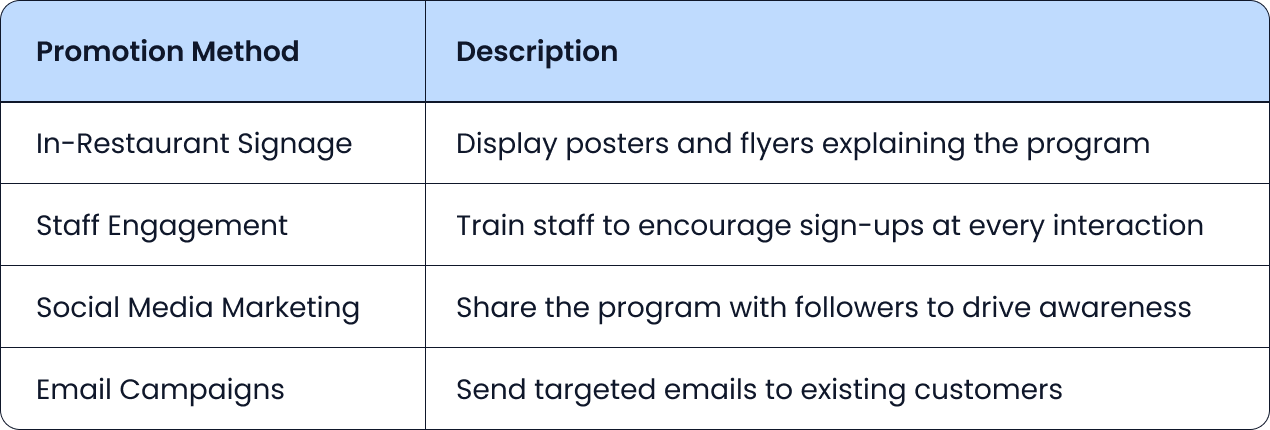
Digital Tools to Manage and Track Loyalty Programs
In today’s digital age, managing a loyalty program manually can be inefficient. Digital tools and platforms make it easier to track customer activity, manage rewards, and analyze program performance. Using the right technology can also enhance the customer experience, making it easier for them to engage with the program.
Benefits of Digital Loyalty Platforms:
- Automation: Automatically track customer purchases and reward points.
- Real-Time Updates: Customers can instantly see their points and rewards on a mobile app or website.
- Data Collection: Digital tools allow you to collect valuable customer data for future marketing efforts.
Popular Loyalty Program Platforms:
- Belly: A points-based digital loyalty platform with customizable rewards.
- FiveStars: Allows for customer segmentation and personalized offers.
- LoyaltyLion: Ideal for integrating with e-commerce and delivery services.
Integrating Loyalty Programs with POS Systems
To make your loyalty program as seamless as possible, integrating it with your point-of-sale (POS) system is a must. This allows for automatic tracking of customer purchases and rewards, reducing the burden on staff and ensuring accurate data collection.
Why Integration is Important:
- Streamlined Process: Customers automatically earn points or rewards with each transaction, making it easier for both staff and customers.
- Accurate Data: POS integration ensures that data is captured correctly, eliminating manual errors.
- Enhanced Customer Experience: With a fully integrated system, customers can easily track their rewards and points in real-time.
How to Train Your Staff to Encourage Sign-Ups
Your staff plays a vital role in the success of your loyalty program. Proper training ensures that they can explain the benefits of the program to customers and encourage sign-ups. Well-informed and enthusiastic staff can make a significant difference in customer participation.
Key Staff Training Tips:
- Understand the Program: Ensure that all staff members fully understand how the program works, including the rewards and how customers can sign up.
- Incentivize Staff: Offer small incentives or rewards to staff members who encourage the most sign-ups.
- Make It Part of the Experience: Encourage staff to introduce the loyalty program during natural customer interactions, such as when presenting the check.
Example Staff Training Checklist:
- Understand program benefits and rewards.
- Know how to assist customers in signing up.
- Encourage sign-ups without being pushy.
- Explain the program to new and returning customers.
Using Customer Feedback to Improve Your Program
Customer feedback is a powerful tool for improving and refining your loyalty program. By listening to your customers, you can identify areas where the program may need adjustments and ensure that it continues to meet their needs.
How to Gather and Use Feedback:
- Surveys: Send out surveys to loyalty program members to get their opinions on the rewards and program structure.
- Direct Feedback: Ask customers for their thoughts on the program during interactions in the restaurant.
- Monitor Engagement: Track how often customers are redeeming rewards and whether they are returning after joining the program.
Key Improvements Based on Feedback:
- Adjust Rewards: If customers aren’t finding value in the rewards, consider offering more attractive options.
- Simplify the Program: If feedback indicates confusion, simplify the earning and redemption process.
- Personalize Rewards: Use feedback to tailor rewards to what your customers truly want, enhancing their experience.
By following these best practices, you’ll set your loyalty program up for long-term success, ensuring that it not only drives customer retention but also strengthens the overall relationship with your patrons.
How to Measure the Success of Your Loyalty Program
Measuring the success of your restaurant’s loyalty program is critical to ensuring its effectiveness and longevity. Tracking key metrics allows you to understand how well the program is performing, whether it’s meeting its objectives, and where adjustments may be needed. By consistently evaluating the performance of your loyalty program, you can make data-driven decisions that optimize both customer satisfaction and business results.
Key Metrics to Track
To accurately assess the performance of your loyalty program, it’s essential to monitor several key metrics. These metrics give you insight into customer behavior, program engagement, and overall effectiveness. Focusing on these metrics will help you identify strengths and areas for improvement.
Important Metrics to Track:
- Customer Retention Rate: Measures how well the loyalty program is helping retain existing customers.
- Redemption Rates: Tracks how often customers are redeeming their earned rewards, indicating engagement.
- Participation Rate: The percentage of customers who sign up for and actively use the loyalty program.
- Average Spend per Visit: Tracks whether customers are spending more due to the program incentives.
- Lifetime Value (LTV): Measures how much revenue a customer generates over their entire relationship with your restaurant.
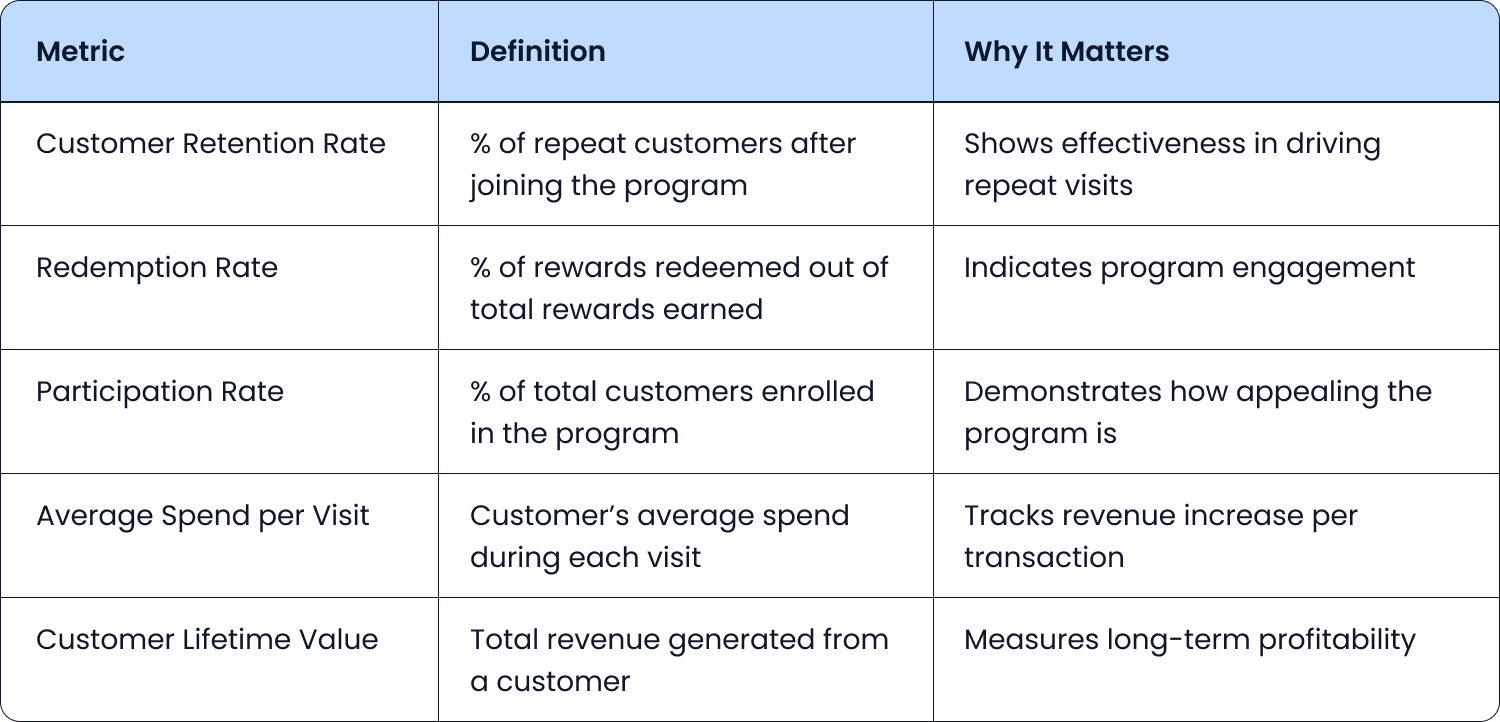
Customer Retention Rate
Customer retention is one of the most important metrics for any loyalty program. A successful program should lead to higher retention rates, meaning more customers return to your restaurant after joining the program.
How to Measure Retention Rate:
- Retention Formula:

- Track Visits: Use your POS system or loyalty program software to monitor how often loyalty members return after signing up.
A higher retention rate indicates that your loyalty program is succeeding in bringing customers back, which is key to long-term growth.
Redemption Rates and Active Participation
Redemption rates provide insight into how engaged your customers are with the loyalty program. If customers are earning rewards but not redeeming them, it may indicate that the rewards are not attractive or that the program lacks clear communication.
How to Measure Redemption Rate:
- Redemption Formula:

- Monitor Active Participation: Track how many customers are actively engaging with the program by redeeming rewards or participating in special offers.
Low redemption rates could signal that the program is too complex, the rewards are unattractive, or customers are unaware of how to redeem them.
Average Spend per Visit
Another key metric is how much your loyalty members spend each time they visit your restaurant. A successful loyalty program encourages higher spending by incentivizing larger purchases or upselling through rewards.
How to Measure Average Spend:
- Track Spending Trends: Use your POS system to track the average amount loyalty members spend per visit.
- Compare with Non-Members: Compare the average spend of loyalty members to non-members to see if the program is driving higher sales.
Example:
- Before Loyalty Program: Average spend per visit = $25
- After Loyalty Program: Average spend per visit = $35
A higher average spend among loyalty members indicates that your program is effectively increasing customer spending.
Lifetime Value Increase
Customer Lifetime Value (LTV) is a crucial metric for understanding the long-term financial impact of your loyalty program. It measures how much revenue a customer will generate throughout their relationship with your restaurant. An effective loyalty program should increase the LTV of your customers by encouraging repeat visits and higher spending over time.
How to Measure Customer LTV:
- LTV Formula:

For example, if a customer spends $30 per visit, visits 10 times a year, and stays loyal for 3 years, their LTV would be $900.
Increasing this number through loyalty incentives is a clear indicator of program success.
How to Adjust Programs Based on Performance Data
Once you have tracked the key metrics, it’s essential to use the data to make informed decisions about your loyalty program. If certain areas are underperforming, adjustments can help improve the program’s effectiveness.
Steps for Adjustment:
- Analyze Low Engagement Areas: If retention or redemption rates are low, consider simplifying the rewards or making them more appealing.
- Optimize Communication: If customers are unaware of their rewards, improve your messaging through email or in-app notifications.
- Test New Rewards: Introduce new rewards or tier benefits based on customer feedback to enhance engagement.

By regularly analyzing and adjusting your loyalty program, you can ensure it remains effective in driving customer loyalty and increasing revenue for your restaurant.
Trends and Innovations in Restaurant Loyalty Programs
As customer preferences evolve, so do the strategies behind loyalty programs. New technologies and innovative approaches are changing the way restaurants build loyalty, focusing more on personalization, convenience, and integration with digital platforms. Staying on top of the latest trends can help your restaurant offer a cutting-edge loyalty program that meets modern customer expectations. Below, we explore some of the most significant trends and innovations shaping restaurant loyalty programs today.
The Role of Mobile Apps in Loyalty Programs
Mobile apps have become a crucial tool for restaurant loyalty programs, offering customers a seamless and convenient way to track points, redeem rewards, and receive special offers. By integrating loyalty programs with a mobile app, restaurants can provide a more engaging and user-friendly experience.
Benefits of Mobile App Integration:
- Real-Time Updates: Customers can instantly view their points, rewards, and offers.
- Push Notifications: Keep customers informed about promotions, reminders to redeem points, or limited-time offers.
- In-App Ordering: Combine loyalty programs with online ordering to make it easier for customers to earn and redeem rewards.
Example Features in a Loyalty App:
- Digital punch cards
- Instant reward redemption
- Special in-app only promotions
- Geolocation alerts for nearby restaurant locations
Using AI and Personalization to Enhance Loyalty
Artificial intelligence (AI) and data analytics are transforming loyalty programs by enabling restaurants to personalize the customer experience. With AI, restaurants can analyze customer behavior, preferences, and purchasing habits to offer more tailored rewards and promotions.
How AI Enhances Loyalty Programs:
- Personalized Offers: AI helps identify customer preferences and tailor rewards or promotions based on individual behavior.
- Predictive Analysis: Predict future behavior, such as when a customer might return or what they might order next.
- Improved Customer Segmentation: AI allows for more accurate segmentation, ensuring each customer receives rewards relevant to their dining habits.
Benefits of Personalization:
- Higher Engagement: Personalized rewards are more likely to be redeemed.
- Customer Satisfaction: Customers appreciate feeling understood and valued through tailored offers.
- Increased Spending: Personalized upsells or cross-sells can drive higher average spend per visit.
The Impact of Social Media Integration
Social media has become a powerful platform for enhancing loyalty programs. By integrating loyalty programs with social media platforms, restaurants can encourage customers to engage with their brand online, share their experiences, and even refer new customers.
How Social Media Integration Works:
- Social Sharing: Reward customers for sharing their dining experiences, checking in, or tagging the restaurant on social platforms.
- Referral Programs: Incentivize customers to refer friends via social media in exchange for loyalty points or rewards.
- User-Generated Content: Encourage customers to create content (e.g., food photos) in exchange for loyalty perks.
Benefits of Social Media Integration:
- Increased Brand Visibility: Social sharing exposes your brand to new audiences.
- Customer Engagement: Keeps customers interacting with your brand even when they’re not dining.
- Organic Growth: Referral programs drive customer acquisition at little to no cost.
Combining Loyalty Programs with Delivery and Online Orders
The rise of delivery services and online ordering has pushed restaurants to integrate loyalty programs with these platforms. Offering rewards for online orders and delivery is an effective way to encourage repeat business from customers who prefer the convenience of dining at home.
Benefits of Loyalty Integration with Delivery:
- Consistency Across Channels: Customers earn points whether they dine in or order delivery.
- Incentives for Online Orders: Encourage repeat orders by offering rewards specifically for online purchases.
- Loyalty Perks for Delivery: Offer free delivery or exclusive menu items for loyalty members.
Example of Loyalty Integration with Delivery:
- Customers earn points for each online order placed through the restaurant’s app or website.
- Offer double points on delivery orders during certain times or days to increase off-peak sales.
- Free delivery for VIP or loyalty members who hit a certain spending threshold.
By leveraging these trends and innovations, your restaurant can offer a modern and engaging loyalty program that attracts and retains customers while keeping up with the latest technological advancements and customer preferences.
Common Mistakes to Avoid in Loyalty Programs
While a well-implemented loyalty program can significantly boost customer retention and revenue, many restaurants make common mistakes that limit the effectiveness of their programs. These pitfalls can lead to low customer engagement, wasted resources, and missed opportunities. Understanding these potential mistakes and how to avoid them is crucial for developing a successful loyalty strategy.
Overcomplicating the Program
A loyalty program should be easy for customers to understand and use. Overcomplicating the rules or requiring too many steps to earn rewards can discourage participation and leave customers frustrated. Simplicity is key to driving engagement.
Common Issues with Overcomplicated Programs:
- Too Many Rules: Customers lose interest if there are excessive terms and conditions for earning and redeeming rewards.
- Complex Point Systems: If the point system is difficult to track or understand, customers may not feel motivated to engage.
- Confusing Rewards Structure: Complicated or unclear reward tiers can make it hard for customers to see the value in participating.
How to Avoid This Mistake:
- Simplify Point Systems: Use straightforward point-per-dollar models.
- Clearly Define Rewards: Make the rewards easy to understand and achievable.
- Streamline Redemption: Ensure customers can easily redeem rewards without jumping through hoops.
Failing to Promote the Program Effectively
Even the best loyalty program won’t succeed if customers don’t know about it. Many restaurants fall into the trap of not promoting their loyalty program enough, resulting in low sign-up rates and participation.
Common Promotion Failures:
- Lack of Visibility: Customers may not notice the program if it’s not actively promoted.
- Inadequate Staff Engagement: If staff aren’t promoting the program, customers may not be aware of its benefits.
- Poor Online Promotion: Not using digital channels such as email and social media to promote the program.
How to Avoid This Mistake:
- In-Restaurant Promotion: Use signage, table tents, and staff recommendations to highlight the program.
- Digital Marketing: Promote the loyalty program on your website, social media, and email newsletters.
- Staff Training: Ensure your team is trained and motivated to encourage customers to join.
Ignoring Customer Feedback
Customer feedback is vital for optimizing your loyalty program, but many restaurants neglect to gather and act on this information. Ignoring customer insights can lead to missed opportunities for improvement and ultimately lower engagement.
Common Feedback Mistakes:
- Not Collecting Feedback: Failing to ask customers for their thoughts on the program can leave you unaware of its strengths and weaknesses.
- Disregarding Negative Feedback: Not addressing concerns or complaints about the program can drive customers away.
- Lack of Iteration: Sticking to the same program without making improvements based on feedback can result in declining participation over time.
How to Avoid This Mistake:
- Regularly Survey Customers: Use surveys or in-person feedback to understand how customers feel about the program.
- Act on Feedback: Make improvements based on the feedback you receive, such as adjusting rewards or simplifying the process.
- Monitor Program Performance: Use data analytics to identify areas for enhancement and track customer satisfaction.
Offering Rewards That Don’t Appeal to Customers
A common mistake is offering rewards that are either not valuable or relevant to your customers. If customers don’t find the rewards attractive, they’re unlikely to engage with the program, leading to low participation and redemption rates.
Common Reward-Related Mistakes:
- Low-Value Rewards: Customers won’t feel incentivized by small or insignificant rewards.
- Irrelevant Rewards: Offering rewards that don’t align with your customer base’s preferences can reduce interest.
- Long Wait Times for Rewards: If customers have to wait too long to redeem points or rewards, they may lose interest in the program.
How to Avoid This Mistake:
- Survey Customers on Preferences: Ask customers what types of rewards they value most, whether it’s free menu items, discounts, or exclusive experiences.
- Offer Varied Rewards: Provide a range of reward options, from small perks to high-value experiences, to appeal to different customer segments.
- Ensure Timely Rewards: Design the program so customers can achieve rewards within a reasonable time frame.
By avoiding these common mistakes and focusing on simplicity, promotion, feedback, and valuable rewards, you can create a loyalty program that drives customer engagement and retention, leading to long-term success for your restaurant.
How to Evolve Your Loyalty Program Over Time
A successful loyalty program is never static. As customer preferences, market trends, and technology change, your loyalty program should evolve to stay relevant and effective. Regularly updating your program not only keeps it fresh and engaging for existing members but also attracts new customers. Below, we will explore key strategies for evolving your loyalty program over time to ensure it continues to deliver value to your restaurant and its customers.
When to Refresh or Relaunch Your Program
Over time, even the best loyalty programs may become outdated or lose customer interest. Knowing when to refresh or relaunch the program can make a significant difference in keeping customers engaged and excited about participating.
Signs It’s Time for a Refresh:
- Decreasing Participation: If you notice a drop in sign-ups or engagement, it may be time to rethink the program.
- Low Redemption Rates: When customers aren’t redeeming rewards, it could indicate that the rewards are no longer appealing.
- Customer Feedback: If customers are providing feedback about dissatisfaction or confusion, it’s a signal to make changes.
Strategies for Refreshing the Program:
- Introduce New Rewards: Add fresh, exciting rewards to reignite interest in the program.
- Simplify the Process: If the program has become too complicated, streamline the point system or redemption process.
- Rebrand the Program: A rebrand, complete with a new name, visuals, and marketing push, can create renewed interest.

Adapting to Changing Customer Preferences
Customer expectations and preferences evolve, and your loyalty program should adapt accordingly. Regularly reviewing what your customers want and adjusting the program to meet those needs ensures that it remains relevant and engaging.
How to Adapt to Customer Preferences:
- Monitor Trends: Keep an eye on industry trends and customer preferences, such as demand for healthier options or eco-friendly practices.
- Survey Customers: Regularly survey your customers to ask what kind of rewards or benefits they would find most valuable.
- Introduce Personalization: As more customers seek personalized experiences, consider using customer data to offer tailored rewards or promotions based on individual preferences.
Examples of Adapting to Preferences:
- Sustainability: Offer rewards that align with eco-conscious trends, such as reusable containers or plant-based meals.
- Health-Focused Rewards: Introduce healthier menu items as rewards for health-conscious customers.
- Exclusive Experiences: Personalize rewards with exclusive dining experiences or VIP treatment for top-tier members.
Staying Competitive with Innovative Features
To maintain a competitive edge, it’s important to continually innovate your loyalty program. Whether through technology integration or unique offerings, adding new features can differentiate your program from others and keep customers engaged.
Innovative Features to Consider:
- Mobile Integration: If your program isn’t already mobile-friendly, consider integrating it with a mobile app that allows customers to track points, redeem rewards, and receive special offers.
- Gamification: Add a fun, competitive element by gamifying the program, such as introducing challenges, levels, or badges that customers can unlock.
- Referral Programs: Encourage current members to refer new customers by offering rewards for successful referrals.
- Tiered Perks: Create multiple tiers with increasingly exclusive rewards to motivate customers to spend more and climb the loyalty ladder.
Benefits of Staying Competitive:
- Increased Engagement: New features and offerings keep customers interested and more likely to participate.
- Customer Retention: Regular updates and innovations give customers a reason to stay engaged with your program.
- Attracting New Customers: A cutting-edge loyalty program can serve as a marketing tool to attract tech-savvy or experience-driven diners.
Testing and Iterating Based on Program Performance
No loyalty program is perfect from the start. To ensure continued success, it’s essential to test different features, rewards, and structures and iterate based on what works and what doesn’t. Regularly reviewing performance data allows you to make data-driven adjustments that improve customer satisfaction and engagement.
How to Test and Iterate:
- A/B Testing: Try different versions of rewards or features with different customer segments to see which performs better.
- Monitor Key Metrics: Continuously track metrics like participation rate, redemption rate, and average spend to identify areas for improvement.
- Collect and Analyze Feedback: Use both qualitative feedback and quantitative data to guide your decisions for program updates.
Examples of Iteration:
- Adjust Rewards: If certain rewards aren’t being redeemed, test new options that may be more appealing.
- Update Tiers: If customers aren’t progressing through loyalty tiers as expected, consider adjusting the thresholds or benefits to make the program more attainable.
By regularly evolving your loyalty program through these strategies, your restaurant can ensure that the program remains dynamic, customer-focused, and effective in driving long-term loyalty and increased revenue.
A well-designed loyalty program is a powerful tool for restaurants looking to build lasting relationships with their customers. By choosing the right type of program, implementing best practices, and continuously evolving to meet customer preferences, restaurants can significantly boost retention, increase customer lifetime value, and stand out in a competitive market. Avoiding common pitfalls and leveraging the latest trends, such as mobile integration and personalized rewards, will ensure your loyalty program remains effective and engaging. Ultimately, a successful loyalty program not only rewards your customers but also drives sustainable business growth for your restaurant.
ABOUT THE AUTHOR
Erkin Coban
Your Customers Deserve The Best
And we got Menuviel for them.
The fastest and easy-to-use online QR menu with 12+ unique features. Choose Menuviel and elevate your service quality to the next level.
Use free for the first 30 days.
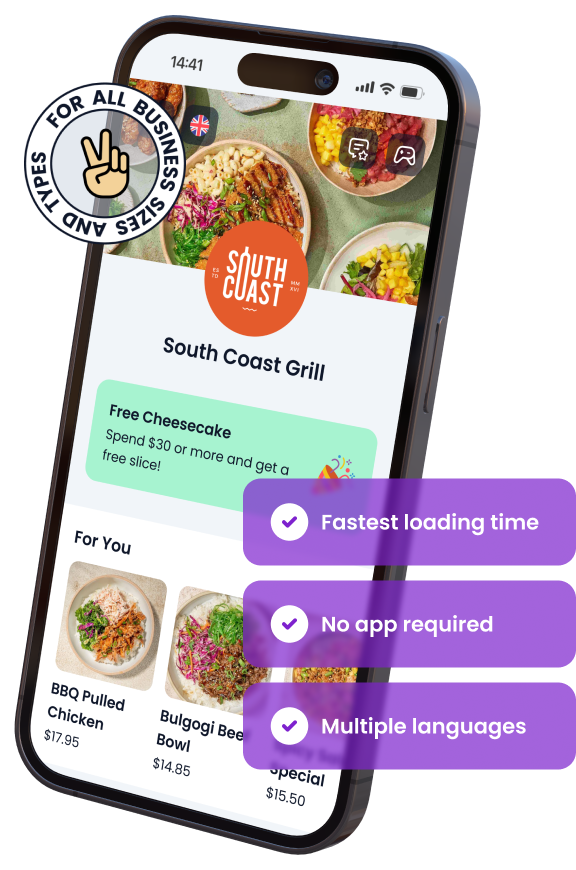
In This Article
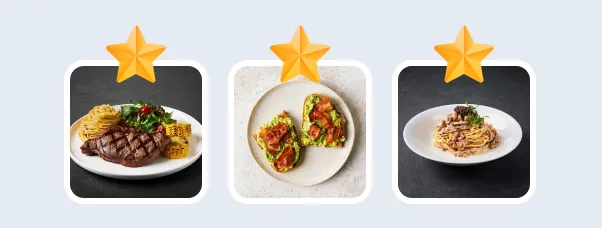
Feature your must-try items for quick visibility
Pin your selected items to the top of your menu. Perfect for bestsellers, new arrivals, or chef’s picks.





